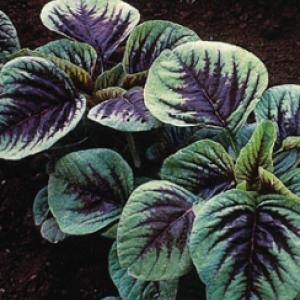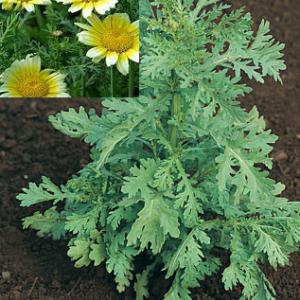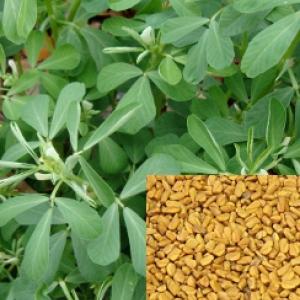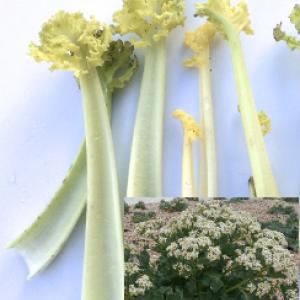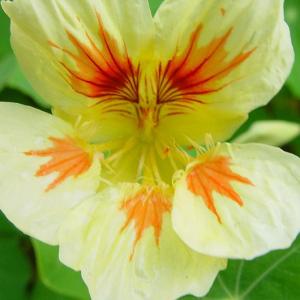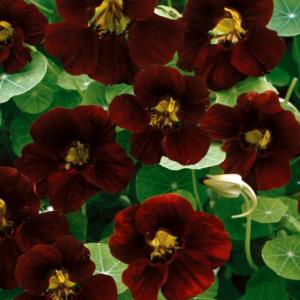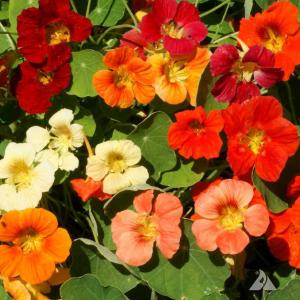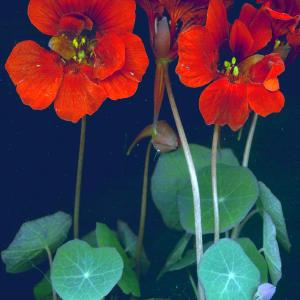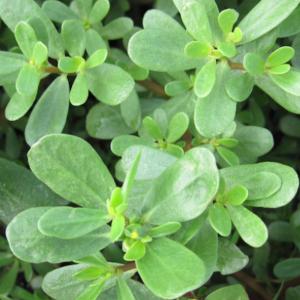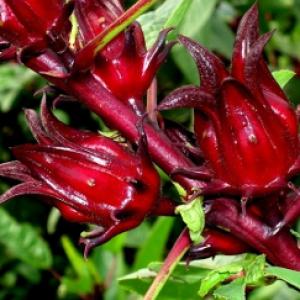Quality seeds for kitchen, cottage and native gardeners
Vegetable Seeds Catalogue
Misc. Vegetables
A good looking edible plant with oval to heart shaped green leaves overlaid with burgundy red. The leaves are a great source of proteins, vitamins, minerals and dietary fibre. The leaf tastes similar to spinach and can be used in the same way. The younger leaves are milder and are ideal in salads. Harvest leaves as needed, young stems can also be eaten. 400 seeds.
Celtuce originates from southern China and is a loose leaf relative of lettuce. The plant has a unique combination of lettuce-like leaves branching from a celery-like stalk. Originally known as Asparagus or Chinese Lettuce when introduced to Europe in the 1890s. In China the thick crisp, tender stalk is used in stir fries and salads, having a mild celery taste. The leaves are used like spinach in salads or cooked. Prefers to be grown in cooler months. 300 seeds.
A fine leafed variety of the aromatic edible chrysanthemum. The green leaves can be added to salads, pickles, sushi or soups and stews where it is added at the last moment so it retains some structure. The small orange and yellow flowers are also edible and add colour to salads or as a garnish. Runs to seed in hot weather. 300 seeds
A fast growing annual herb/spice. Both the leaves and seed can be used in the kitchen. In India the leaves are used like spinach in curries, while the seeds are used are lightly roasted and used as one of the spices in curries. As fenugreek is a legume with nitrogen nodules on its roots it can be used as a dual purpose crop; in the kitchen and as summer green manure crop. Collect seed from the pods for sprouting. 100 seeds.
A hardy perennial vegetable, from the north Atlantic coastlines, that can handle a wide range of condition including drought and salt. The plant dies back in winter, the tender spring shoots are considered a delicacy with a nutty flavour, usually blanched (cover with a bucket) to be eaten raw or cooked. Older leaves are bitter so best left to grow, where the plant develops into a unique ornamental. Roots and flower shoots can also be eaten. 10 seeds.
Jewel Peach Melba is gorgeous variety with semi-double, creamy yellow flowers (to 5 cm) with red centres. It is a dwarf, bushy annual that flowers from summer-autumn. Flowers, leaves and young seed pods are a spicy addition to fresh salads. A frost tender annual that readily self seeds. 14 seeds.
A great non-trailing nasturtium with dark chocolate to mahogany coloured flowers. With a dwarf habit it makes an ideal border or container plant. Plant in a warm position over summer. Flowers, leaves and young seed pods are a spicy addition to fresh salads. A frost tender annual, that easily self-seeds. 12 seeds.
A wild, trailing plant that just keeps on running! With a mix of colours including scarlet, yellow, orange and cream this plant provides lots of colour and plenty of ground cover. Plant in a warm position over summer. Flowers, leaves and young seed pods are a spicy addition to fresh salads. A frost tender annual, easily self-seeds. 15 seeds.
This non-trailing, 20-30cm high, old variety is covered in scarlet-red, single flowers with attractive dark blue-green foliage. A good container plant in a warm position over summer. Flowers, leaves and young seed pods are a spicy addition to fresh salads. A frost tender annual that readily self seeds. 20 seeds
Known as ‘verdolaga’ in Spain where the green fleshy leaves are used in salads, soups and stews. It has slightly sour, lemon, salty flavour. This low growing succulent annual has seven times the beta-carotene of carrots, six times more vitamin E than spinach & a high plant source of Omega 3 fatty acids. So amazing nutrition properties! Harvest leaves and stems as needed. Not to W.A. 300 seeds.
Known as ‘verdolaga’ in Spain where it used in salads, soups and stews. Purslane is a great addition to salads as it has slightly sour, lemon, salty flavour. Reported to have the highest levels of healthy omega-3 fatty acids than any other leafy vegetable. A low growing succulent annual with green fleshy leaves and red upright stems. Harvest leaves and stems as needed. 500 seeds. Not to W.A.
A fast growing annual shrub (to 2m) with attractive yellow flowers. Rosella is known for its use in the kitchen where the calyx (the red fleshy cover framing the seed pods) is used to make jam, jelly, sauces, wine and tea (dry the red calyx). Young leaves can be steamed. Remove the first flush of seed pods to ensure greater yields.
For the best crop ensure rosella has 5-6 months frost free growing, so in cooler areas sow indoors to transplant to a sheltered position once the weather has warmed. Soak seed overnight in warm water, plant and keep warm (22˚C+) and moist. 15 seeds. Not to WA.
